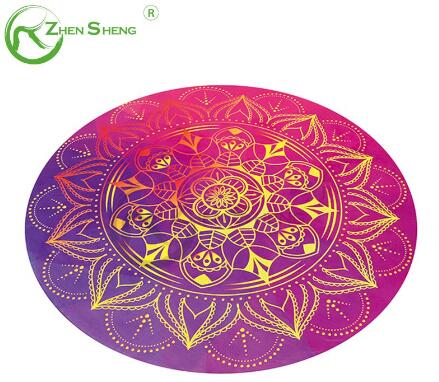In recent years, as our awareness of environmental issues has grown, so has our desire to lead a more sustainable lifestyle. This shift towards eco-conscious choices extends beyond our daily habits and into our fitness routines, including the practice of yoga. Yoga, a holistic discipline that promotes physical and mental well-being, can be further enhanced by using eco-friendly yoga mats. These mats offer a sustainable alternative to traditional options, minimizing harm to the environment while still providing the comfort and support needed for a fulfilling practice. In this article, we will explore the benefits and features of eco-friendly yoga mats, along with tips for choosing the right one for you.

The Environmental Impact of Conventional Yoga Mats:
(1)Conventional yoga mats are typically made from PVC (polyvinyl chloride), a synthetic material derived from fossil fuels. The production and disposal of PVC mats contribute to environmental degradation and health risks due to toxic additives and difficulty in recycling. PVC mats can take centuries to decompose in landfills, releasing harmful chemicals into the environment. By opting for an eco-friendly alternative, we can reduce our carbon footprint and protect our planet.
(2)Sustainable Materials for Yoga Mats:
Eco-friendly yoga mats are crafted from sustainable materials that prioritize environmental responsibility. These materials often include natural rubber, organic cotton, jute, cork, or a combination of these components. Natural rubber mats are popular for their durability, excellent grip, and non-toxic properties. Organic cotton mats are biodegradable and provide a soft and comfortable surface. Jute and cork mats offer natural antimicrobial properties, moisture resistance, and unique textures, enhancing both grip and aesthetics.
(3)Health Benefits of Eco-Friendly Yoga Mats:
Apart from their positive impact on the environment, eco-friendly yoga mats also offer various health benefits. Unlike PVC mats, which can emit harmful chemicals and odors, eco-friendly mats are free from toxic substances that can be harmful when inhaled or absorbed through the skin. These mats are typically hypoallergenic, ensuring a safe and non-toxic practice for individuals with sensitivities or allergies.If you want to buy, click here!
(4)Choosing the Right Eco-Friendly Yoga Mat:
Selecting the perfect eco-friendly yoga mat involves considering various factors, such as material, thickness, texture, grip, and maintenance. It's important to find a mat that aligns with your individual preferences and requirements. For example, if you prioritize grip and stability, natural rubber mats are an excellent choice. If you value portability, lightweight mats made from organic cotton or jute may be more suitable. Additionally, consider the mat's thickness and cushioning to ensure comfort during prolonged practice sessions.
(5)Caring for Your Eco-Friendly Yoga Mat:
To maximize the lifespan of your eco-friendly yoga mat, proper care is crucial. Most eco-friendly mats require simple maintenance, such as wiping them down with a mild detergent and warm water after each use. Avoid exposing the mat to direct sunlight for prolonged periods, as it may cause natural materials to deteriorate. Regularly air-drying the mat and storing it in a cool, dry place will help preserve its quality.
Conclusion:
As practitioners, we have the power to make conscious choices that benefit both ourselves and the planet. By transitioning to eco-friendly yoga mats, we can enhance our yoga practice while minimizing our environmental impact. These mats provide a sustainable alternative to conventional options, ensuring a safe and comfortable surface while reducing waste and pollution. Let us embrace sustainability, one downward dog at a time, and contribute to a greener, healthier future.
Previous: Choosing the Right Weight Plates
Next: What is 5D Cinema?
Copyright:@2020-2021
Comments Please sign in or sign up to post.
0
0 of 500 characters used